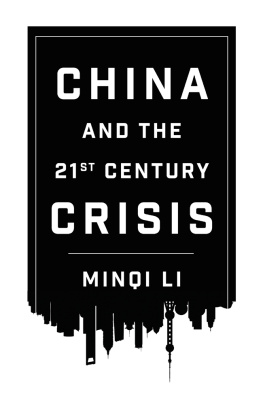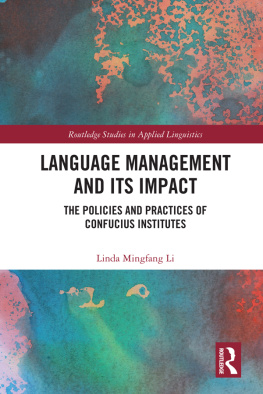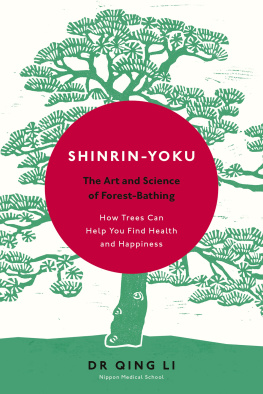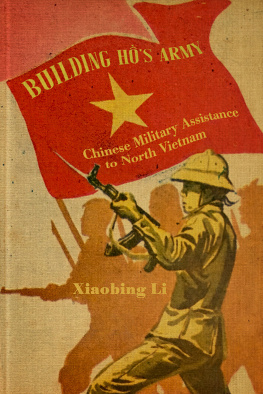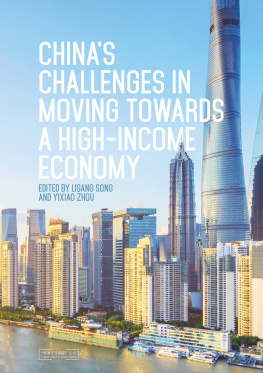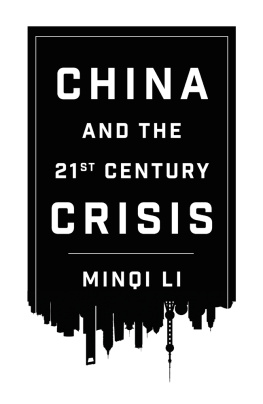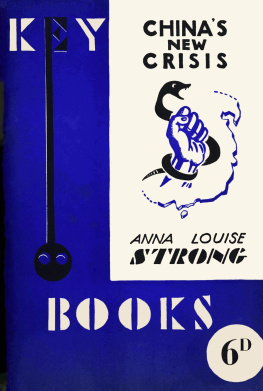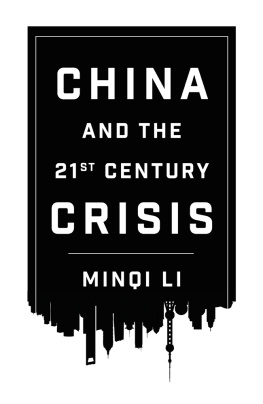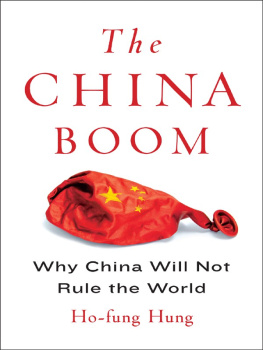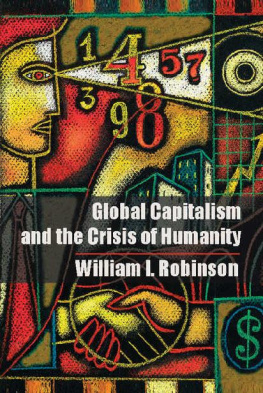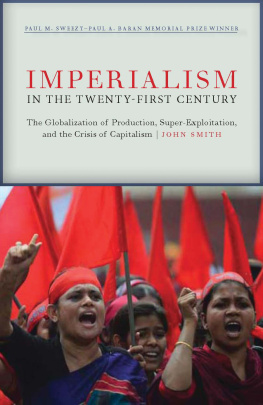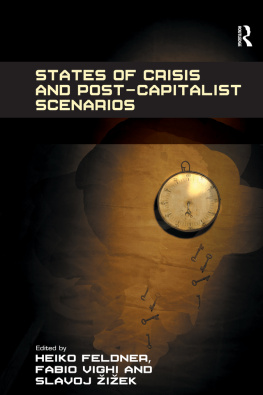Li - China and the Twenty-first-Century Crisis
Here you can read online Li - China and the Twenty-first-Century Crisis full text of the book (entire story) in english for free. Download pdf and epub, get meaning, cover and reviews about this ebook. year: 2016, publisher: Pluto Press, genre: Politics. Description of the work, (preface) as well as reviews are available. Best literature library LitArk.com created for fans of good reading and offers a wide selection of genres:
Romance novel
Science fiction
Adventure
Detective
Science
History
Home and family
Prose
Art
Politics
Computer
Non-fiction
Religion
Business
Children
Humor
Choose a favorite category and find really read worthwhile books. Enjoy immersion in the world of imagination, feel the emotions of the characters or learn something new for yourself, make an fascinating discovery.
China and the Twenty-first-Century Crisis: summary, description and annotation
We offer to read an annotation, description, summary or preface (depends on what the author of the book "China and the Twenty-first-Century Crisis" wrote himself). If you haven't found the necessary information about the book — write in the comments, we will try to find it.
Li: author's other books
Who wrote China and the Twenty-first-Century Crisis? Find out the surname, the name of the author of the book and a list of all author's works by series.
China and the Twenty-first-Century Crisis — read online for free the complete book (whole text) full work
Below is the text of the book, divided by pages. System saving the place of the last page read, allows you to conveniently read the book "China and the Twenty-first-Century Crisis" online for free, without having to search again every time where you left off. Put a bookmark, and you can go to the page where you finished reading at any time.
Font size:
Interval:
Bookmark:

China and the Twenty-First-Century Crisis
China and the
Twenty-First-Century Crisis
Minqi Li

First published 2016
by Pluto Press
345 Archway Road, London N6 5AA
www.plutobooks.com
Copyright Minqi Li 2016
The right of Minqi Li to be identified as the author of this work has been asserted by him in accordance with the Copyright, Designs and Patents Act 1988.
British Library Cataloguing in Publication Data
A catalogue record for this book is available from the British Library
ISBN 978 0 7453 3537 7 Hardback
ISBN 978 0 7453 3538 4 Paperback
ISBN 978 1 7837 1705 7 PDF eBook
ISBN 978 1 7837 1707 1 Kindle eBook
ISBN 978 1 7837 1706 4 EPUB eBook
This book is printed on paper suitable for recycling and made from fully managed and sustained forest sources. Logging, pulping and manufacturing processes are expected to conform to the environmental standards of the country of origin.
Typeset by Swales & Willis
Text design by Melanie Patrick
Simultaneously printed by CPI Antony Rowe, Chippenham, UK
and
Edwards Bros in the United States of America
CONTENTS
CHINA AND THE TWENTY-FIRST-CENTURY CRISIS
Before 2008, capitalism was celebrated as the best of all possible economic and social systems. It was the End of History There is no alternative! The Great Recession of 20082009 nearly destroyed the global capitalist economy and brought the era of the End of History to an end.
Since then, mass protests and popular rebellions have transformed the political map throughout the world. In Western Europe and North America, growing poverty and mass unemployment led to young peoples political awakening and popular desires for social change. In the Middle East, dictatorial regimes that had lasted for decades were overthrown by popular uprisings. In Latin America, several progressive governments were elected. Cuban socialism began to revive and a successful socialist transition in Venezuela became a possibility. In China, the Maoist New Left became a significant political and intellectual force. For several years, Bo Xilai (who was a member of the Chinese Communist Partys Politburo) led an economic and social experiment in the Municipality of Chongqing that seemed to provide a viable progressive alternative to the neoliberal capitalist model.
In 2012, Bo Xilai was purged from the Party and later sentenced to life imprisonment ostensibly on the indictment of corruption. In 2013, the new Chinese leadership led by Xi Jinping re-confirmed their commitment to reform and openness. The Chinese govenrment has undertaken a new round of neoliberal economic reforms including privatization of the remaining state-owned enterprises and financial liberalization.
Despite growing popular opposition, European capitalist classes were determined to impose fiscal austerity programs on the working classes. In the Middle East, the initial promises of the Arab Spring have been replaced by political chaos and social miseries as the region plunged into a complex web of class conflicts, religious fundamentalism, and imperialist intervention.
The economic and social success of Latin American progressive governments has been partially based on the global commodity boom driven by Chinas demands for energy and raw materials. Ironically, as the Chinese capitalist economy slows down, global commodity prices have collapsed. Latin American progressive governments are now struggling for their political survival.
It appears that, for the moment, the global ruling elites have brought the system back to life and put the popular challenges against the system under control. However, underneath this apparent stability, a new crisis is approaching.
This book will argue that by the 2020s, economic, social, and ecological contradictions are likely to converge in China, leading to a major crisis for Chinese and global capitalism. Unlike the previous major crises, the coming crisis may not be resolved within the historical framework of capitalism.
Global Capitalism: Crisis and Restructuring
Capitalism is a unique historical system based on the endless accumulation of capital. The modern capitalist world system emerged in Western Europe in the sixteenth century and became the globally dominant system in the nineteenth century. The rise of global capitalism depended upon a set of historical conditions that provided cheap and abundant supply of labor force, energy, and material resources. However, by the early twenty-first century, the various conditions that historically have underpinned the operation of the capitalist world system are beginning to be undermined.
The capitalist world system operates as a world-economy with multiple political structures rather than as a world-empire with a single dominant political structure (Wallerstein 1979: 56). The competition between multiple states compels the nation-states to provide favorable political conditions for capital accumulation. But excessive inter-state competition undermines the systems long-term common interests and threatens the survival of the system. Thus, a state more powerful than all the other states or a hegemonic power is needed to regulate the inter-state competition and promote the systemic interests (Arrighi and Silver 1999: 2631).
Historically, the United Provinces (the Dutch Republic), the United Kingdom, and the United States have been the successive hegemonic powers. US-led global capitalist restructuring in the mid-twentieth century helped to resolve the systemwide major crisis over the period 19141945 and paved the way for the unprecedented boom of the global capitalist economy from 1950 to 1973.
The US-led restructuring succeeded in part by accommodating the challenges of the anti-systemic movements. These movements represented the interests of the social groups that were created during the previous stages of global capitalist expansion. These included the social democratic movement which represented the western working classes, the national liberation movement which represented the non-western indigenous elites (the national bourgeoisies), and the communist movement (Wallerstein 2003).
The modern communist movement originated from the left wing of the social democratic movement in the early twentieth century. But by the mid-twentieth century, it had evolved into a radical variant of the national liberation movement (Wallerstein 2000a). In several peripheral and semi-peripheral states (most importantly in Russia of this book will discuss in detail the core, semi-periphery, and periphery as structural positions in the capitalist world system).
During the global economic boom from 1950 to 1973, historical anti-systemic movements were consolidated and new social forces were created. By the late 1960s, the collective demands of the working classes in the core and the semi-periphery started to exceed the capacity of the system to accommodate. The general decline of the profit rate led to a system-wide economic and political crisis.
In response to the crisis, the global capitalist classes organized a counter-offensive. China was one of the key battlegrounds in the global class struggle. By the late 1970s, Chinas internal class struggle ended with the decisive victory of the capitalist roaders in authority within the Communist Party (a political term used during Chinas Cultural Revolution from 1966 to 1976, referring to the faction of the Chinese Communist Party leadership who were in favor of greater economic and social inequality). Chinas reintegration into the global capitalist economy provided the system with the fresh supply of a large cheap labor force. This helped to turn the global balance of power in favor of the capitalist classes who went on to win the global class war in the late twentieth century.
Font size:
Interval:
Bookmark:
Similar books «China and the Twenty-first-Century Crisis»
Look at similar books to China and the Twenty-first-Century Crisis. We have selected literature similar in name and meaning in the hope of providing readers with more options to find new, interesting, not yet read works.
Discussion, reviews of the book China and the Twenty-first-Century Crisis and just readers' own opinions. Leave your comments, write what you think about the work, its meaning or the main characters. Specify what exactly you liked and what you didn't like, and why you think so.

